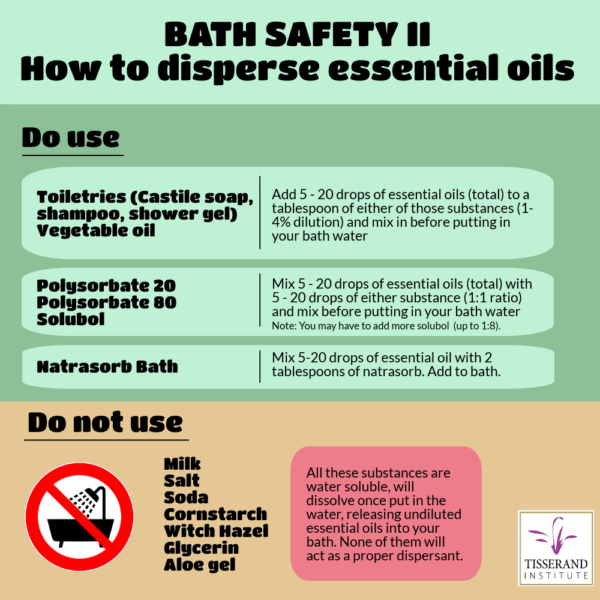Bath Safety: how to use essential oils safely in the bath
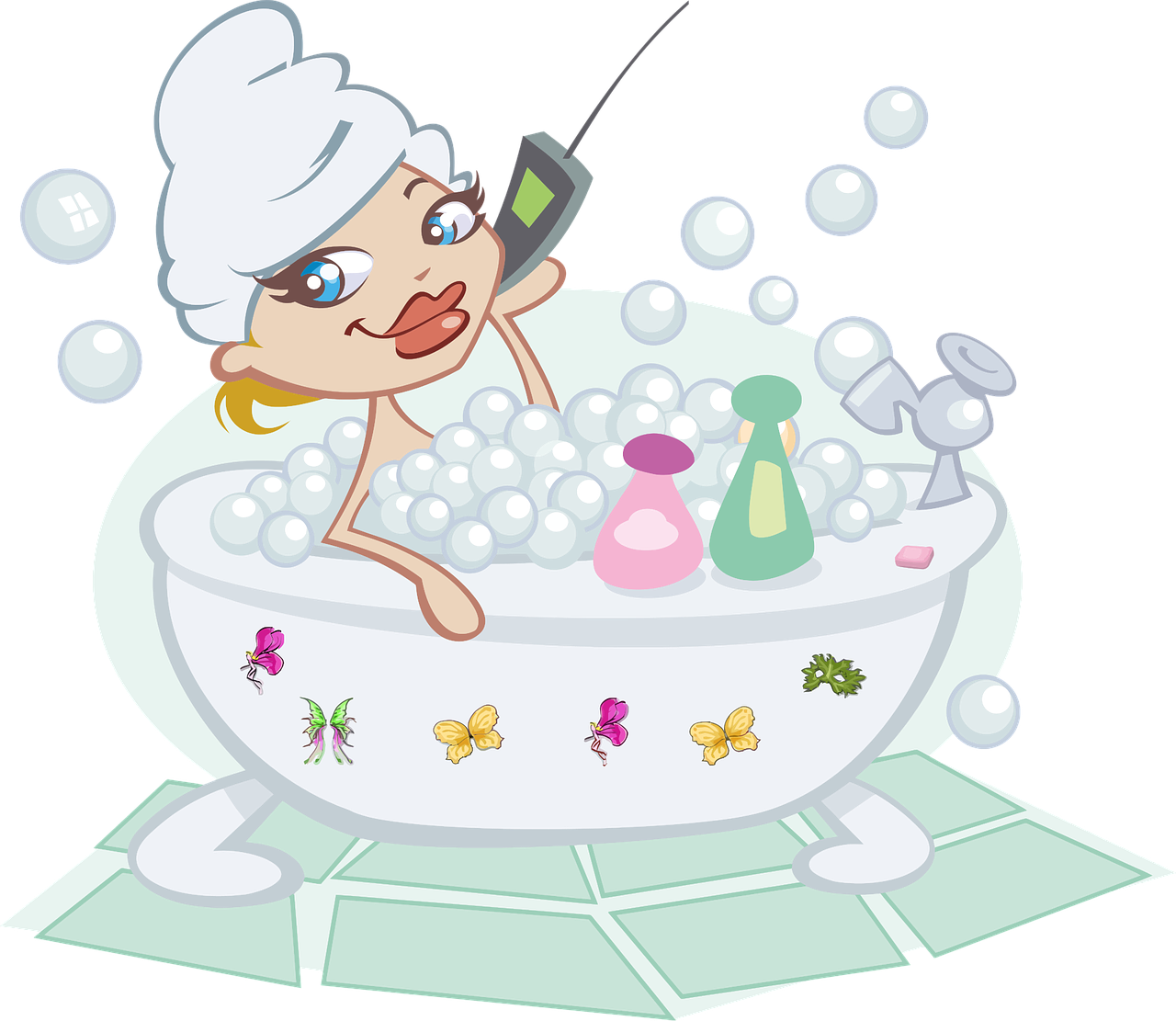 An aromatherapy bath can be a very relaxing and therapeutic experience, and it is one of the most popular ways to use essential oils. However, it can very easily turn unpleasant if you don’t follow one simple rule – disperse! Essential oils are not water soluble, and so pouring them directly into a bath will result in a film of undiluted essential oils sitting on top, waiting patiently for your tender flesh to enter the water. Much of that fine film is now attached to your skin. Because the oils are warmed up by the water, and also cannot evaporate, they often sting like crazy.
An aromatherapy bath can be a very relaxing and therapeutic experience, and it is one of the most popular ways to use essential oils. However, it can very easily turn unpleasant if you don’t follow one simple rule – disperse! Essential oils are not water soluble, and so pouring them directly into a bath will result in a film of undiluted essential oils sitting on top, waiting patiently for your tender flesh to enter the water. Much of that fine film is now attached to your skin. Because the oils are warmed up by the water, and also cannot evaporate, they often sting like crazy.
Many have made this mistake, as you can see in our adverse reaction reports here. Unfortunately, some essential oil users try to dilute essential oils in substances that will not disperse essential oils, as you can see in the case where a mother tried diluting some tangerine oil in full fat milk, resulting in a nasty reaction in her two daughters.
Although there is no such thing as essential oils that are soluble in water, that does not mean you cannot use them in your bath. Essential oils can be dispersed in water and we are going to tell you how to do this safely. We put together a list of substances you either already have at home or can easily obtain, and that can be efficiently used to disperse essential oils in your bath. We have highlighted those substances that have a false reputation for being suitable (full-fat milk, epsom salts etc.) with an explanation of why they don’t work. We want you to enjoy stress-less and safe baths!
Please note: the information below is based the assumption that each ingredient would be used ‘as is’ and not as a minor ingredient in a formulated product. Always bear in mind safety maximums for specific essential oils!
What to use to disperse essential oils in water
Household products that will disperse essential oils into a bath
-
Foaming products (baby shampoo, shower gel)
It is important to note that manufactured products were not formulated with the addition of extra ingredients in mind. This means that the emulsion itself, as well as the preservative, could be seriously challenged, and fail, if you add essential oils.
Some companies sell stock formulas or bases that DO take into account the addition of essential oils, usually at a maximum additional percentage , say, 1-4% of the total amount by weight. You can safely add essential oils to these bases, following the manufacturer’s guidelines. In ½ ounce of base, 1-4% is about 5-20 drops of essential oil.
To get around the off-the-shelf issue, it is possible to add your essential oils to the amount of product you intend to use at the time you intend to use it. For example, if you’re going to wash your hair and typically use ½ ounce (15 ml) of shampoo, then you can put that amount in a little dish, add in your safe percentage of essential oil, mix well, and use. Alternatively, you can pour off enough for a few shampooings into a separate container, add your essential oil percentage and store the rest unmolested. Be sure to use what you’ve made in short order and don’t try to keep it for an extended period, in order to avoid contamination issues.
How to use: Mix 5-20 drops of essential oil per ½ ounce (1 tablespoon) of your chosen bath base. Either use this amount for one bath, or make up a larger quantity for future use.
-
Vegetable oils (coconut, olive, sunflower…) as a carrier oil
 Essential oils can be safely added to any vegetable oil, properly diluted, if thoroughly mixed. These oils (also known as carrier, fixed, fatty or vegetable oils) work well to safely dilute and ‘carry’ essential oils. However, once added to the bath, and because oil and water don’t mix, the carrier/essential oil will not disperse into the water. Instead, it will float on the surface, clinging to the sides of the tub and your skin. So, although the essential oils are safely diluted in the carrier, this does make for a pretty slippery, greasy bath experience. For a slightly less greasy floating bath oil, you could use fractionated coconut oil or jojoba oil.
Essential oils can be safely added to any vegetable oil, properly diluted, if thoroughly mixed. These oils (also known as carrier, fixed, fatty or vegetable oils) work well to safely dilute and ‘carry’ essential oils. However, once added to the bath, and because oil and water don’t mix, the carrier/essential oil will not disperse into the water. Instead, it will float on the surface, clinging to the sides of the tub and your skin. So, although the essential oils are safely diluted in the carrier, this does make for a pretty slippery, greasy bath experience. For a slightly less greasy floating bath oil, you could use fractionated coconut oil or jojoba oil.
How to use: Mix 5-20 drops of essential oil per ½ ounce (1 tablespoon) of your chosen bath base. Either use this amount for one bath, or make up a larger quantity for future use.
Recommended ingredients to disperse essential oils into bathwater
Things you need to order but are easy to get from suppliers and re-sellers that cater to crafters.
-
Solubol
If you want to use essential oils in the bath — or dilute them in water, to use for things like body mists and sprays — this is the product we recommend.
Solubol is a dispersant for essential oils in water-based systems like body mists and sprays which are high in water or hydrosols. Start mixing at a 1:1 ratio, then add more solubol until the essential oils are fully incorporated or solubilized, which may require a dilution ratio of 1 part essential oil to up to 8 parts solubol. Ingredients (INCI): sucrose stearate, Helianthus annus (sunflower oil), cera alba (beeswax), Sterc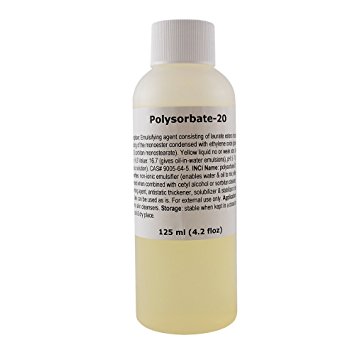 ulia urens gum, acacia gum, Propolis cera (bee propolis), glycerin, lecithin, Cocos nucifera (coconut oil), tocopherol, L-ascorbic acid, Rosmarinus officinalis (Rosemary) Leaf extract.
ulia urens gum, acacia gum, Propolis cera (bee propolis), glycerin, lecithin, Cocos nucifera (coconut oil), tocopherol, L-ascorbic acid, Rosmarinus officinalis (Rosemary) Leaf extract.
How to use: Mix 5-20 drops of essential oil with Solubol at the recommended ratio. Follow manufacturer’s instructions.
-
Polysorbate 20
Although it has a bad rap, polysorbate 20 is a safe substance to use if you want to disperse essential oils in water. This is a non-ionic surfactant that can solubilize essential oils into a water based system. It is soluble in water and glycerin and partially soluble in fractionated coconut oil. Best used for adding small amounts of essential oils – 2-3% is ideal, or whatever is skin safe, but you can go up to 15% or so if needed, in water based products like room spray, body mist, linen spray. Not suitable for carrier oils. Start mixing at a 1:1 ratio.
How to use: Mix 5-20 drops of essential oil with an equal amount of Polysorbate 20. Add to bath.
-
Polysorbate 80
Just like Polysorbate 20, this is a safe substance to use to disperse oils in water. It is a better option if you want to disperse both essential oil and a carrier oil in your bath for an extra moisturizing effect. In more technical terms this is a safe non-ionic surfactant that can solubilize carrier oils and essential oils into a water-based system. It is insoluble in glycerin, soluble in water, and partially soluble in fractionated coconut oil and soy bean oil. Best used for carrier plus essential oils in products like scrubs, dispersible bath oils, bath bombs, bath melts. Can be used for body sprays. Use up to 20% max with carrier oils and 5% max for just essential oils. Start mixing at a 1:1 ratio.
How to use: Mix 5-20 drops of essential oil with an equal amount of Polysorbate 20. Add to bath.
A NOTE ON POLYSORBATES: The polysorbates are made from a sugar alcohol called sorbitol, which is safe for human consumption. It is often used in cakes, cookies and other baked goods, and is naturally present in many fruits and some vegetables. In order to make polysorbates, the sorbitol is ethoxylated, and this process results in the creation of a contaminant: 1,4-dioxane. According to the IARC, 1,4-dioxane is reasonably anticipated to be a human carcinogen based on sufficient evidence of carcinogenicity from studies in experimental animals (source here).
However, according to Health Canada, 1,4-dioxane is carcinogenic from oral or inhalational application, but it is not carcinogenic from dermal application, and because it is not mutagenic/genotoxic, there are safe levels.
The potential presence of 1,4-dioxane is controlled by purification steps, which in turn minimize the risk to human health. The simplest way to find safe polysorbates (though all are officially regarded as safe) is to only buy those that are approved for food use. If you are not sure about using polysorbates, you can of course work with any of the alternatives suggested in this article.
-
Natrasorb Bath: INCI Tapioca Starch
This is tapioca starch that has been modified using a patented process that allows it to absorb and then disperse essential oils safely into a batch by capturing the oils into minute ‘pockets’ in the powder. Note that it cannot be substituted with a regular tapioca starch. It will absorb and carry large quantities of carrier and essential oils and is particularly useful for bath products. The starch is processed to create little ‘pockets’ to hold the oils in a solid, powder form. Once the natrasorb bath comes into contact with the water, it dissolves and releases its carrier/fragrance load safely dispersing them into the water. It will not cling or leave a film on your skin or the tub. Very easy to use.
How to use: Mix 5-20 drops of essential oil into a half cup of natrasorb, then add the mixture to the bath. If desired, epsom salts can be added to the mixture.
Click on the image below for easily shareable guidelines on proper dispersion of essential oils in your bath.
Ingredients that will not safely disperse essential oils into a bath
These substances have been (wrongly) assumed to disperse essential oils in bathwater. Because these substances are water soluble, people believe that if they mix essential oils into them then put them in water, the oils will disperse. However, oil and water don’t mix! So for example, if you mix oil into baking soda, the baking soda will dissolve into the water, but the oils will just float around on top of it. This is why we recommend the products above instead, which will help the oils disperse throughout the water. Here is a list with an explanation for why each is not safe to use in the tub. 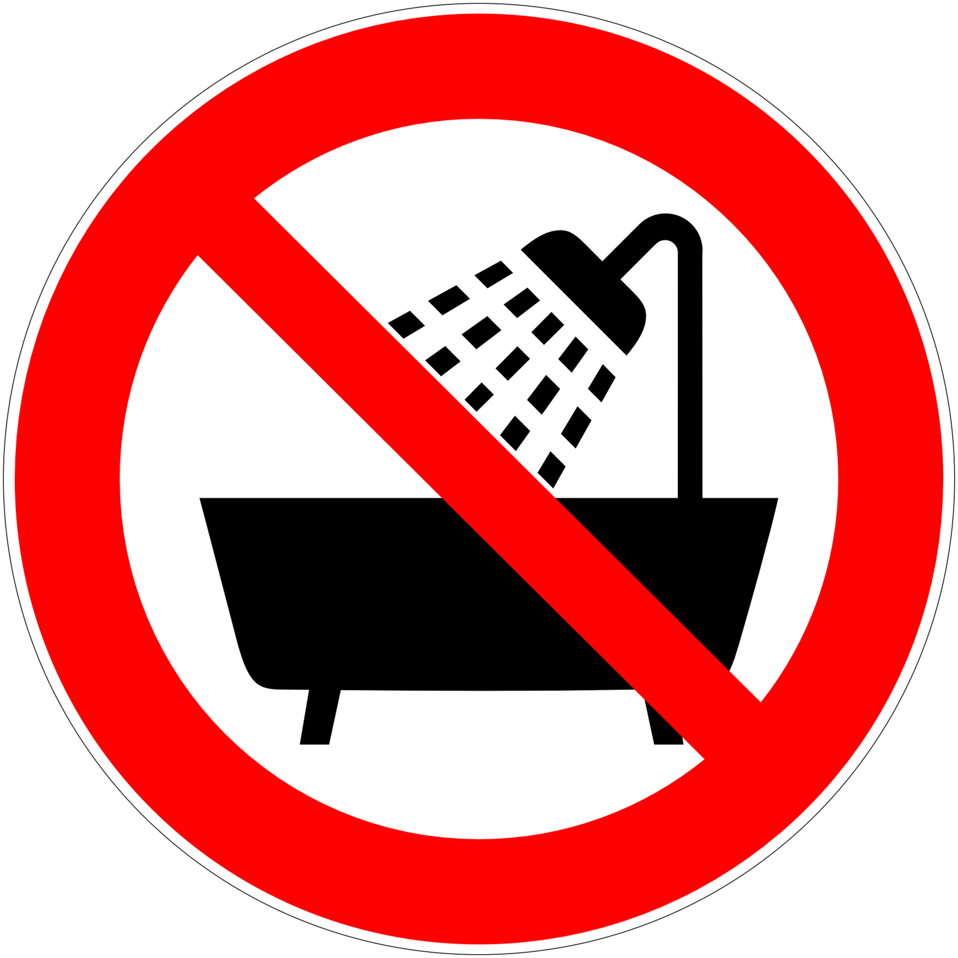
- Cornstarch
Regular cornstarch is oil and moisture absorbent in its dry form, but it has no physical mechanism to “hold” essential oil once it is added to bath water. It is insoluble in cold water, and with heating, the granular structure will first swell then begin to break down and disperse. However, any carrier oil or essential oil that has been added to it when dry will release directly into the water, floating or clinging to surfaces and skin.
- Baking soda
Baking soda is fully water soluble but has no physical mechanism to “hold” or disperse carrier or essential oils. You may be able to incorporate the oils by mixing or kneading where it appears there are no clumps or other visible signs of the oils, but the baking soda will dissolve in the water, leaving the oils floating in the tub.
- Epsom salt or regular salt
Salt is fully soluble in water and will dissolve once added to your bath. However, adding essential oils to salt and then stirring does not properly dilute or solubilizing the oils, even if the salts appear dry. Salt is not a carrier for essential oils. You can first dilute your essential oils with a vegetable oil and then add to salt to create a “wet” mixture. The salt will mostly stay incorporated with the carrier oil/essential oil, but only until added to a bath. Then, the oils will be released to float and cling to skin and surfaces.
- Milk
Both animal and plant milks are an emulsion of fat in water. All milks are water soluble and are not suitable carriers, dispersants or solubilizers for essential oils, again, because water and oil don’t mix. While you may be able to create a temporary emulsion between essential oils and milk, particularly in high fat content animal milk, at a molecular level there is nothing holding the drops of each liquid together except for the mechanical action of vigorous whisking. Once in the bath the essential oils float on the surface, perhaps slightly more dispersed, but not much. You will still have virtually undiluted essential oils coming into contact with your skin.
- Glycerin
Glycerin is completely water soluble. Essential oils are oil soluble. Glycerin is not an appropriate carrier for essential oils because oil and water don’t mix!
- Witch hazel
Witch Hazel Distillate is all water and completely water soluble. Witch Hazel with 14% alcohol is also completely water soluble. Remember, water and oil don’t mix!
- Alcohol
At least 160 proof (80%) alcohol is necessary for proper dispersion of essential oils with 190 proof (95%) being preferable. Everclear and perfumer’s alcohol fall into this category and the purchase of both is restricted in some areas. (You cannot dissolve essential oils in vodka, as the alcohol content is only about 40%.) So long as you first dissolve the essential oil in the alcohol, a certain percentage of water can be added with no separation. However when added to a bath, any solution of alcohol and essential oil floats on the surface with an oil slick appearance. The alcohol rapidly evaporates, leaving the essential oil virtually undiluted to attach to your skin.
- Aloe vera
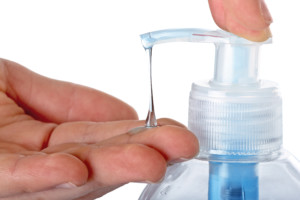 There are several types of Aloe Vera leaf extract – Gel, Jelly, Juice and Liquid. There is also a powder that is meant to be reconstituted in water. None of these are appropriate carriers for essential oils in the bath. Aloe Vera Jelly, which has added thickeners and preservatives, may be used as an essential oil base for direct application to the skin. However, if added to the bath, the essential oils will separate and float, as with other watery bases. For more detail on different Aloe Vera preparations, visit our post HERE.
There are several types of Aloe Vera leaf extract – Gel, Jelly, Juice and Liquid. There is also a powder that is meant to be reconstituted in water. None of these are appropriate carriers for essential oils in the bath. Aloe Vera Jelly, which has added thickeners and preservatives, may be used as an essential oil base for direct application to the skin. However, if added to the bath, the essential oils will separate and float, as with other watery bases. For more detail on different Aloe Vera preparations, visit our post HERE.
Where can I get the supplies to safely add essential oils to the bath?
US
Lotioncrafter – www.lotioncrafter.com
Wholesale Supplies Plus – www.wholesalesuppliesplus.com
Ingredients To Die For – www.ingredientstodiefor.com
Making Cosmetics – www.makingcosmetics.com
Brambleberry – www.brambleberry.com
The Herbarie – www.theherbarie.com
The Formulator Sample Shop – www.formulatorsampleshop.com
The Sage – https://www.thesage.com/
New Directions Aromatics – www.newdirectionsaromatics.com/
MakeYourOwn – www.makeyourown.buzz
Camden Grey – www.camdengrey.com
Sunrose Aromatics – www.SunroseAromatics.com
Canada
Windy Point – www.windypointsoap.com
EU
Gracefruit – www.gracefruit.com
The Soap Kitchen www.thesoapkitchen.co.uk
Soaposh www.soaposh.com
Phoenix products – http://www.phoenixproducts.co.uk
Plushfolly – http://plushfolly.com
Aromantic – aromantic.co.uk
Aroma Zone – https://www.aroma-zone.com

